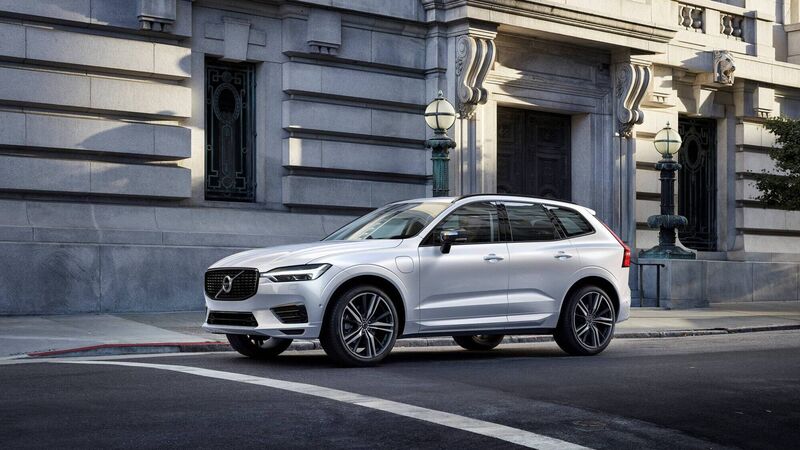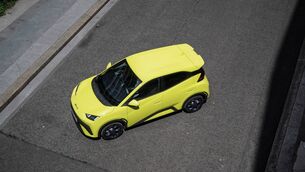Volvo XC60 T8 Hybrid Polestar aims high - but falls a little short

Volvo XC60 Recharge Plug-In Hybrid
Volvo has proven itself to be a modern day master of carefully plotted public relations coups, not least of which was its stunning announcement in 2017 of the death of the internal combustion engine (ICE).
The all-encompassing and damning excoriation of that thing which, for the past 130 years or so, has been the cornerstone of the entire automotive manufacturing industry globally was a masterstroke of PR and gained the Sino-Swedish concern more column inches worldwide than had it claimed to have cracked the eternal conundrum of perpetual motion.
Being PR spin, of course, meant that while grandly claiming that by 2019 – which was last year, for those of you with short term memory loss – it would electrify each and every one of its products, the company was not, in fact, condemning the ICE to the garbage bin of eternity.
The optics of the situation were very win-win. Volvo gained overnight notoriety as a car maker with the greenest of credentials and commanded a prime slot among a whole bunch of planet-savers of any and every hue.
Realistically, Volvo was not actually doing much to further the saving of the planet, but kicking the can down the road a little and claiming the high moral ground from each and every one of their peers.
I’m not for one moment suggesting that Volvo led their automotive opponents on a merry dance with what was a wildly optimistic and – whisper it – ever so slightly over optimistic statement which has not yet heralded the death of either petrol or diesel engines and nor will it for many, many years to come.
Regardless, Volvo put itself in the vanguard of green companies and made previously green giants like Tesla look like amateurs in the process.
They have not ditched the ICE however, and the proof of that pudding is very evident in this week’s tester, the so-called Twin Engine XC60 T8 Hybrid Polestar. I say ‘so-called’ because it does not actually have two engines and the use of the words ‘twin’ and ‘engine’ is what might be described as a creative interpretation of what’s on offer.
And what is on offer is a 316 bhp petrol engine which drives the front wheels and an electric motor which produces an extra 86 bhp and drives the rear wheels. The combination of these two, er, motivational forces, makes for a total output of 401 bhp (I know, the sums don’t necessarily add up, but that’s what it is) and, all told, a pretty stonking, if a little flawed, SUV.
Worth noting too is the use of the word ‘Polestar’ in the nomenclature of the car. Polestar is, of course, Volvo’s new all-electric performance division and its association with what is nominally a regular production car suggests that it might have a bit more spark about it than people might imagine. And it does.
Essentially this is something pretty unusual; it is a sporty PHEV. Very sporty, in fact. The 0-100 kph dash is achieved in just under five seconds and the top speed is 230 kph. It also has an eight-speed auto ‘box and comes with full-time four-wheel drive. And yet, if you drive it properly (i.e. by making sure the batteries are topped up as much as possible) it will return a gob-smacking consumption rate of 2.08 l/100 km (which is 134.5 mpg in old money).
That said, if you do not mind the volts, then that figure judders down to a terribly unimpressive 10.3 l/100 km – or 27 mpg.
Even so, this thing does feel – particularly given its size – outlandishly fast and it genuinely looks like the bizzo as well. Stuff like the gold-coloured Brembo/Akebono callipers and the equally gold Ohlins dampers (which can just be seen behind the massive 22” five-spoke alloys) indicate an impressive engineering overhaul.
Incidentally the black/gold colour theme is continued on the inside of the car where it is kitted out with very natty golden seat belts.
Out on the road, the XC60 T8 Polestar demonstrates itself to be a supreme motorway cruiser and its ability to soak up the kilometres without breaking sweat is very impressive. It does this in a quiet and unfussed manner, and you could almost feel a hint of distain as it did so.
On lesser B-roads, though, the whole concept does not so much unravel completely, but certainly does get ragged at the edges. The handling is very good, albeit with a little lean as might reasonably be expected, but the ride is not great.
Over rough surfaces – and there are plenty of then around where I live – the car is very uneasy and did not demonstrate to me the level of assuredness that you’d expect from a car costing this sort of money.
Volvo does admit to leaving the hardcore performance issues to the Germans, but to allow them outperform you in such a critical area of the car’s character smacks of a lack of commitment to get the car properly sorted.
This is a very quick car that does not exactly encourage whoever is behind the wheel to pedal it quickly. It seems to want to impress, but it actually reluctant to do so and I found that both curious and unsatisfactory.
Volvo is certainly aiming this thing at a core market which prefers comfort over dynamism, but with ride characteristics like this, they are actually danger of pleasing neither. And that is a shame, because this is actually a very likeable machine – the Scandi elegance of the interior is nearly worth the entry fee on its own – but one which is let down by its dynamic ineptitude.
We here at have handed out many gongs to Volvo in recent years on the basis that the company has become a clear and present threat to its largely German rivals and its products largely reflect that fact.
Sometimes, though, the company strains to attain its own lofty goals and the XC60 T8 Polestar is a car that aims high, but falls short of its aims. Out-of-whack ride characteristics, grabby brakes and one or two other small flaws really do take the shine of what should have been something way better.





